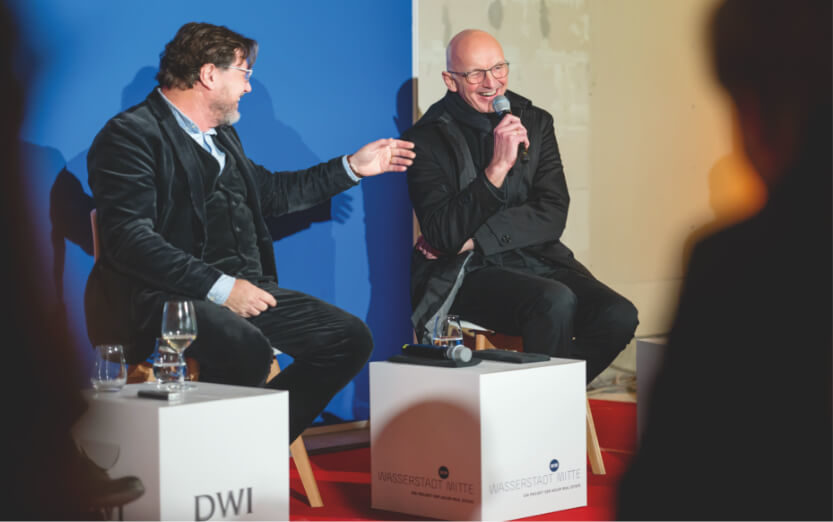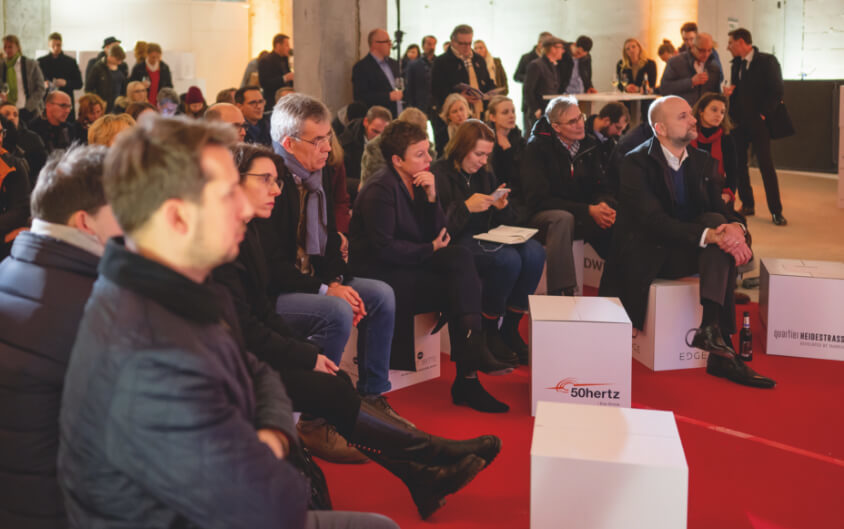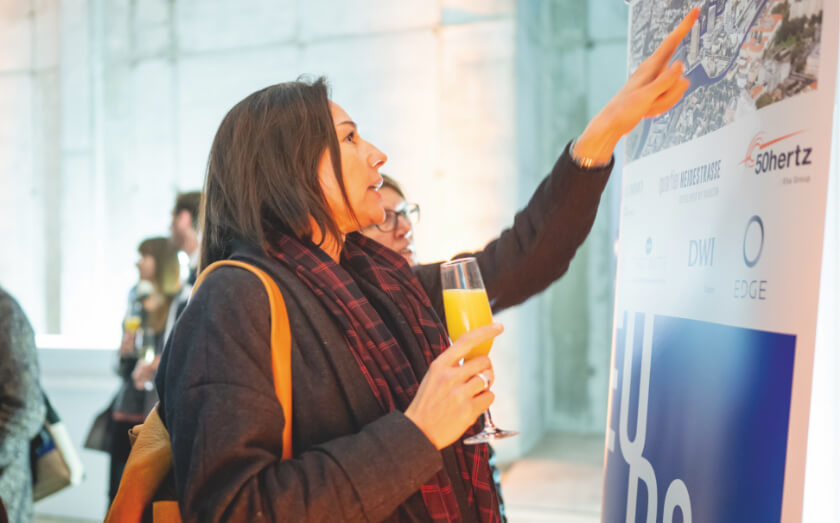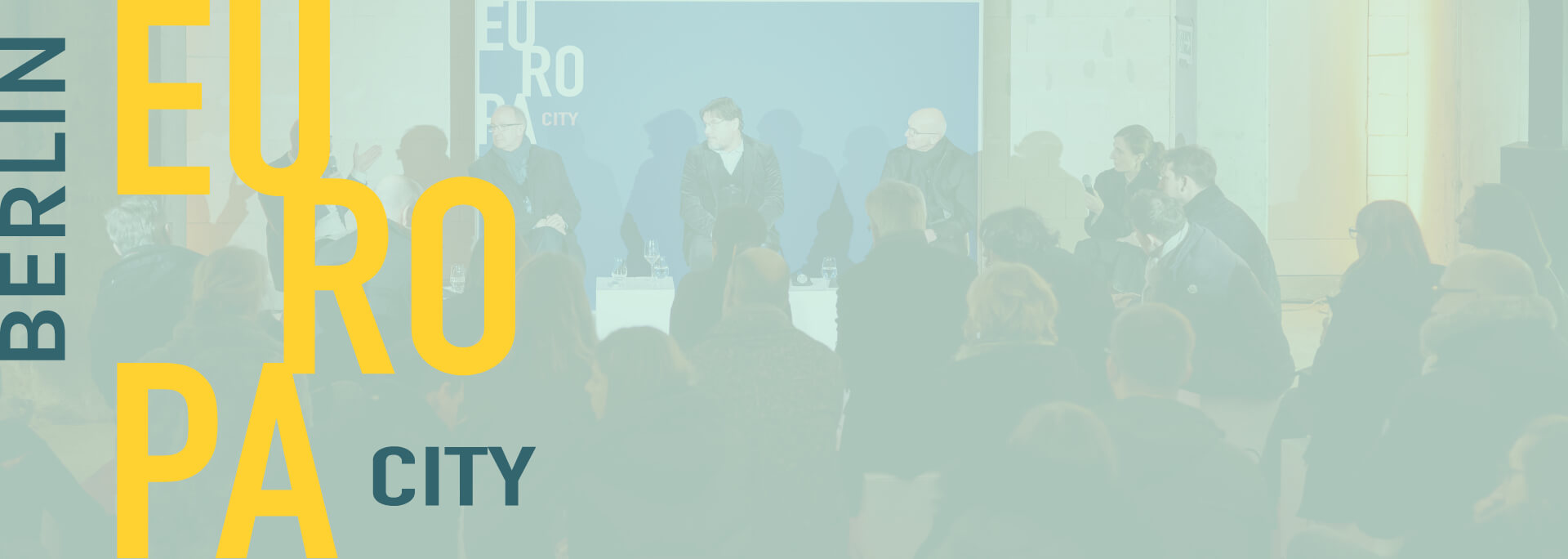Europacity plays host – Exchange of views kick off the year
An evening out, inside a building shell. The Standortgemeinschaft Europacity is a community of real estate developers. On 28 January, they held their New Year ’s reception, for the first time, in Europacity. As part of the event, guests were allowed to explore ‘QH Core’ in Quartier Heidestrasse – even though the building is still under construction until this autumn. And as you would expect, most of the conversation, but nor all, was about architecture and building. The evening also played host to a panel discussion on Europacity and neighbourhood development. The panel produced some excellent conversation and exchanges of ideas, some of which are documented below.
What can and what must the urban neighbourhood achieve today?
Mommsen: It must be sustainable. And climate-friendly in the sense that it offers people a high amenity value even in hot summers. We have to make sure there’s a lot of greenery, in loggias, on roofs, and in open spaces. In times of climate change, squares with shady spaces are crucial for the quality of life.
Kühne: The social environment that is created there is also important.
Paap: Neighbourhoods should have a specific identity. And public open space must be valued.
Forster: An urban district must ensure people feel comfortable, that real neighbourhoods are created.

Many architects designed the buildings in this quarter. Mrs Mommsen, your office was responsible for the planning of the public outdoor spaces. Will your plans live up to your claim to create a climate-friendly city, in all the aspects you mentioned?
Mommsen: Connecting the many small open spaces between the different buildings is a very important task for the quarter. Cities with high-density have to weigh up or reconcile the use of open space with the infrastructural requirements. I think we have achieved the utmost that is workable here. And much of this is not yet visible. For instance, the square at Nordhafen and the promenade are yet to be built.
Open spaces are essential in connecting architecture
Marianne Mommsen
Two issues with the project were occasionally mentioned. First, not everyone is convinced that a lively urban mix will be created here. And second, there are controversial opinions about the quality of the architecture. What’s your opinion on this?
Kühne: On the urban mix, Europacity started when the public sector was into privatisation. Only in the final stages of planning did the state of Berlin call for social housing. In the beginning, the Berlin real estate market was also in a precarious situation. Both sides then tried to develop Europacity as a district that is ‘Berlin-compatible’.
Forster: Speaking of ‘Berlin-compatible’. I would have liked Europacity to be a real Berlin district. But it’s not at all like Berlin, it’s more like Munich Arnulfpark or Frankfurt-Riedberg. Every city has such a quarter. So, this looks like any place in the old West Germany.

Mr Paap, you designed two buildings in Quartier Heidestrasse with gmp Architects. Do you understand the criticism?
Paap: If you don’t look at the whole history of this place, you could get the impression that it would have been desirable for two or three buildings on Heidestrasse to have a more specific architecture. But further away from the street there are some beautiful buildings. For example, the apartment blocks by Cramer Neumann Architects in Wasserstadt Mitte. Or KunstCampus designed by léonwohlhage. The monitoring set out in the Senate’s urban development agreement has been ongoing. So, the architecture has generally received a great deal of attention – including the designs and the materials used.

Let’s talk about retail and business. A good mix of these, above all else, is associated with expectations for good urban living.
Forster: It will not be easy to make businesses settle on the ground floors. But once several thousand people are living there, retail and business will move into Heidestrasse. And why aren’t there any mezzanine floor apartments planned in the quarter? These create liveliness as well.
Paap: QH Track in Quartier Heidestrasse is a building complex for commercial use only. And what we are building on Heidestrasse, for example, will have commercial space on the ground floors. However, most of the upper floors in the quarter are for residential purposes. All in all, this will be quite a mix. Though, if the train station at Perleberger Brücke does not get built, Nordhafen-platz could be a less lively spot.
Kühne: The mix in Europacity includes the people who live there as well as the surroundings. There is great potential here for networking within the neighbourhood. As well as development potential in the surrounding area. Remember, Bayer Schering is to the north, and the Bundeswehr hospital, which is due for expansion, is just to the east. And tourism promoters believe visitors will want to visit these new places along the canal. That’s why they have contributed EUR 20 million for the development of the waterfront. Europacity is extremely central, with all the potential to be vibrant.
